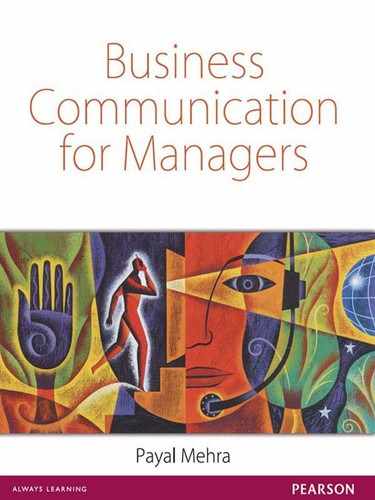Chapter 12
BUSINESS LETTERS, MEMORANDUMS, AND E-MAILS
“Employ your time in improving yourself by other men's writings so that you shall come easily by what others have labored hard for.”
Socrates1
After completing this chapter, you should be able to:
- Understand the anatomy of business documents.
- Differentiate between the types of business correspondence.
- Enable effective writing of professional and clear business correspondence.
- Create documents that help achieve the objective of the organization.
INTRODUCTION
Even though most of us write fewer letters than before, letters still occupy a prominent place in professional life. They are permanent and have an enduring quality about them that is reassuring to others. Even if a verbal confirmation has been made about a promotion, a transfer, or a sales contract, “something in writing” is required to support the verbal claim. This makes the agreement legally valid as well.
A business letter (or formal letter) is a formal way of communicating between two or more parties. There are many different uses and types of business letters. Business letters can be informational, persuasive, motivational, or promotional. Whatever their purpose, they should be typed and printed out on standard 8.5 × 11-inch white paper. Business letters demand much from us, as we do not generally know the person to whom we are writing, and even if we do, we do not know them at a personal level. Written words, thus, are the primary means to influence a business reader.
Letters are not easy to compose. They are time-consuming and demanding. How often have you have felt apprehensive writing a request for leave or an application for a job that you are interested in? Our future is dependent on the appropriate choice of words, the syntax and composition of the paragraph, and the structure of the letter itself.
Composing a business letter requires attention to the following details:
- The purpose: What is the aim of the letter? The objective should be presented in a clear and concise manner. Long-winded explanations bore the readers who are already pressed for time.
- The audience: Who is going to read the letter? The ability to identify the audience and tailor the writing to suit their needs is a highly valued skill. Determine the audience of your letter: is it the human resources manager or a group of engineers?
- The context: What is the background of the composition? Under what circumstances is the letter being composed?
- The technique: What conventions govern the writing? Tone, professionalism, and courteousness are important considerations in professional writing.
The process of writing a letter is:
- State your purpose in the opening sentence.
- Add evidence in the middle section, supporting your key point.
- Close with a few complimentary sentences.
- Reread your letter. Check for tone. Correct spellings and grammatical errors.
- Get a second opinion (optional, but strongly recommended).
- Revise.
The three parts of a letter are:
- The introduction
- The main body
- The conclusion
Once you know to whom you are writing and why, you have to actually start writing the letter. The following steps might be useful in getting started:
- Start with the audience: If you know the audience professionally, consider how the audience thinks, looks, and feels. Is it favourably inclined to your proposal or do you envisage opposition? When you start framing, what is it that needs to be told first? Do you need an introduction or have you already discussed the idea first? If you are writing an application, what is it that needs to be told first (since you do not know the audience at all)?
- Use strategic formats: When writing to inform, use the “Tell format” (tell–reason–action); for writing to persuade, use the “Sell format” (Attention–Interest–Desire–Action). Refer to Chapters 10 and 11 for more on writing strategies.
- Create empathy: This is the personal touch your letter can convey. For instance, if you want the prospective client to buy your product, why should they care to read your document? To use the cliché—what's in it for them? Understand their problem and then offer a solution.
- Identify the main idea: What is it that you would like the audience to do after they have read your letter? Experts recommend the “10-second formula” for situations when you have trouble identifying the main theme. The writer has to pretend that he or she has only 10 seconds to explain his or her position. What the writer says in those 10 seconds is the main theme of the letter.
- Start writing: Begin with the introduction, move on to the middle, and then write the conclusion. Do not edit at this stage. Just let the ideas flow.
COMPONENTS OF A BUSINESS LETTER
Formal business letters are written on official letterhead. This has the address and complete contact information for the company. The other components of the business letter are discussed in this section.
The Date
There are three places where the date may be written. The first is on the right-hand side, in line with the addressee's name and address; the second is on the left-hand side, above the addressee's name and address; and the third is below the writer's address/the complementary close.
Exhibit 12.1 Salutations and their Corresponding Closings
| Salutation | Closing |
|---|---|
| Dear Sarvesh/Marjorie | Yours sincerely |
| Dear Mr/Ms Verma | Sincerely |
| Dear Sir/Madam | Yours faithfully |
The manner in which the date is written is important. The format that should generally be followed is “May 17, 2010.” This format helps avoid the confusion caused by date formats followed in other cultures like the month–date–year format followed in the United States.
Inside Address
The address of the addressee (the person to whom the letter is addressed) should be written correctly. The address should be accurate and complete, and should include the appropriate title or designation, notation (such as Mr/Ms/Dr/Shri), and company name. Use of the term “Mrs” should be avoided.
Salutation and Complimentary Close
Exhibit 12.1 demonstrates the proper way to greet and sign off in a business letter.
The Title
Women are introduced or addressed using the title “Ms” in all spoken and written business communication. If they prefer to be addressed as “Mrs” or “Miss,” they are expected to inform their business associates accordingly.

Women are introduced or addressed using the title “Ms” in all spoken and written business communication. If they prefer to be addressed as Mrs or Miss, they are expected to inform their business associates accordingly.
Modern writing omits the use of “yours” in the closing, and ends with “sincerely” or “faithfully.” It may be wise to add “thank you” or “with kind regards” before the complimentary close, in case one is writing to superiors or if one is seeking a favour or an obligation. Modern writing also omits the use of a comma after the salutation. In the United States, it is customary to add a colon (:) after the salutation (as in “Dear Suresh:”).
Subject Line
The subject line is written after the salutation. It may be centrally aligned or left aligned. The subject line is short (just a phrase), indicates the reason why the letter is written (for instance, a request for extraordinary leave) or just the theme (for instance, extraordinary leave), and is either bold or in italics.
The Body
The body of the letter incorporates the text or the contents of the letter, which is usually in paragraphs (about three paragraphs). The introduction is of a shorter length. It introduces the purpose for writing the letter and gives a brief context for it. The second paragraph is the main body, and it elaborates on the purpose, giving evidence of the same. This section is replete with examples, facts, and logical arguments. The conclusion ends with a positive hope (if it is a request) or with an action agenda (if it is an informational letter). It is brief and perhaps the shortest part of the entire body.
The Signature
Sign the name after the closing. Add your name in print and your designation and contact numbers after the signature. If the reader needs to be informed about the title/designation, add it in parenthesis after the printed name (for instance, Preeta Jain (Dr)). The same rule applies for gender—add Ms after the printed name if required.
Enclosures
If the letter contains documents other than the letter itself, then these have to be indicated as enclosures (“Enclosure (1)”); if there is more than one additional document, the enclosures should be numbered. Follow this up with a list that indicates what is being enclosed.
Cc
“Cc” refers to carbon copies. When you send a copy of a letter to more than one person, you use this abbreviation to let recipients know who else has received the letter.
The Writer's Address
The writer's return address should be written in the top right-hand corner if the letterhead is not being used.
BUSINESS LETTER FORMATS
There are three major formats for writing business letters. They are:
- The block format
- The modified block format
- The indented block format
The Block Format
The block format is the simplest format for writing business letters. In the block format, all the text is flush against the left margin. The margins are justified. Exhibit 12.2 gives us an example of a business letter in block format.
Exhibit 12.2 Block Format: Business Letter
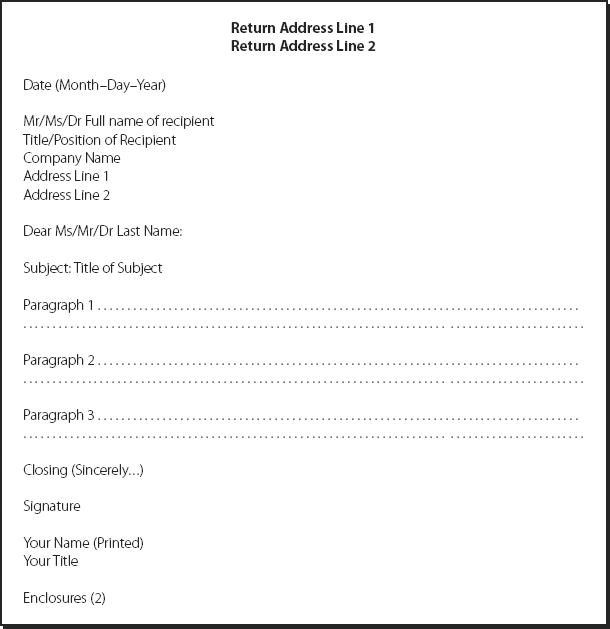
The Modified Block Format
In the modified block format, if letterhead is not being used, the sender's address, date (the date can go on either the left or the right side), the closing, signature, and printed name are all indented to the right side of the page (here the writer can use his or her discretion to make the document look presentable). Exhibit 12.3 gives us an example of a letter written in the modified block format.
Exhibit 12.3 The Modified Block Format
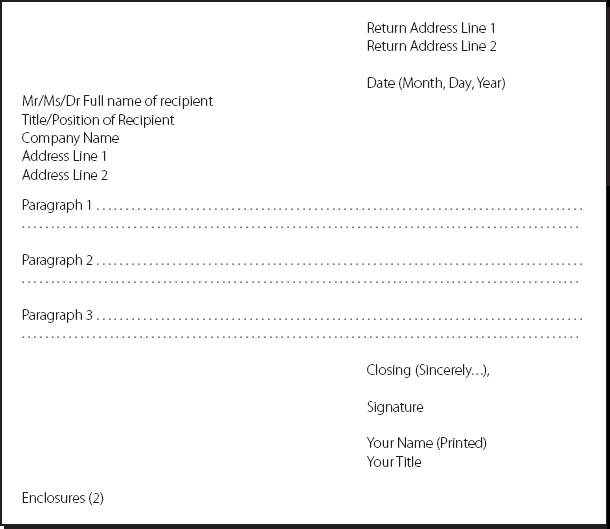
Exhibit 12.4 The Indented Block Format
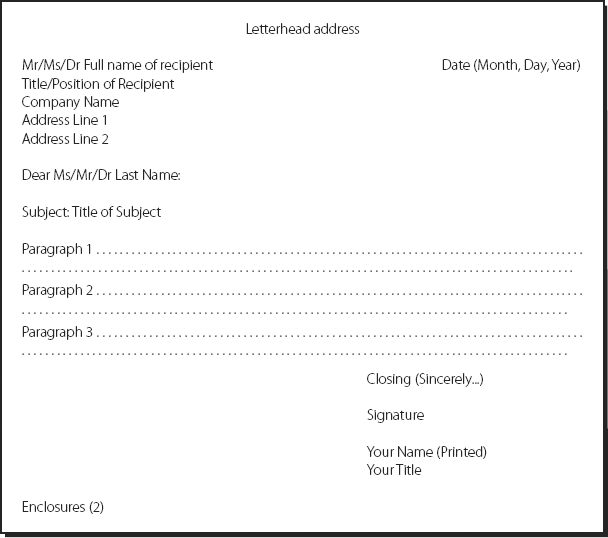
The Indented Block Format
In the indented block format, the first line of each paragraph is indented. Exhibit 12.4 gives us an example of a business letter in indented block format.
PURPOSE OF A BUSINESS LETTER
There are various kinds of business letters for various purposes. Some examples are:
- Cover letters: for resumes, proposals, and reports
- Letters of enquiry
- Sales letters
- Offer letters
- Request letters
- Good news letters
- Bad news letters
Cover Letters
A cover letter is one that accompanies a resume when applying for a job. A cover letter is also important when submitting proposals and reports. A cover letter in reports is called a “letter of transmittal.” Exhibit 12.5 shows a conventional layout for a cover letter.
Letters of Enquiry
A letter of enquiry is when one approaches a company speculatively, and there has been no call for vacancy or advertisement for a quotation. Exhibit 12.6 gives us an example.
Exhibit 12.5 A Cover Letter
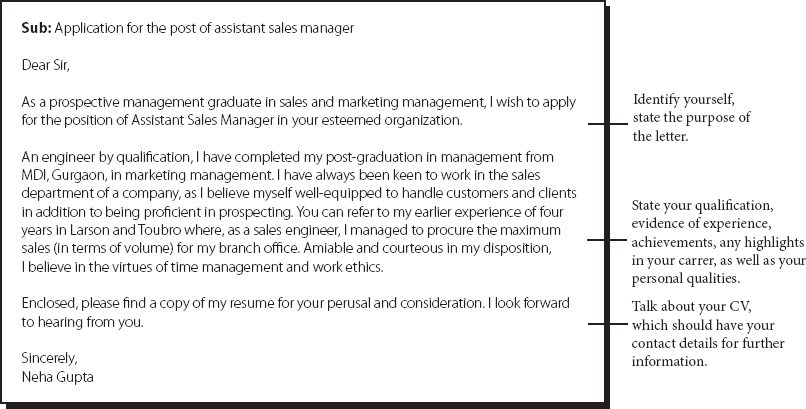
Exhibit 12.6 A Letter of Enquiry
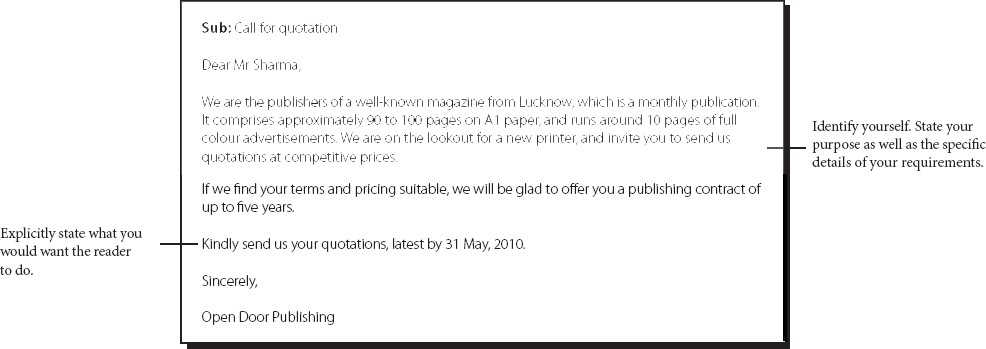
Exhibit 12.7 A Letter Replying to an Enquiry
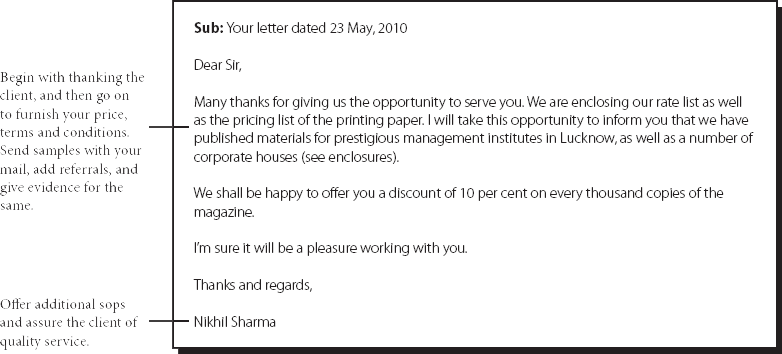
The reply to enquiries must also be prompt and to the point. Exhibit 12.7 provides an example.
Sales Letters
Sales letters are persuasive letters. Their purpose is to solicit a sale or win a customer or contract. While soliciting can be done on the telephone, there are times when a sales letter can be used to reach prospective clients, particularly if a large group needs to be targeted.
A strong sales letter serves useful functions such as:
- Enhancing the brand image of the company.
- Emphasizing the sales message.
- Getting a “foot in the door”
On the other hand, a poorly written sales letter can mar one's business prospects and can even cost existing accounts.
Three popular categories of sales letters exist:
- Introduction letters: to introduce the company to a prospect and initiate an appointment.
- Follow-up letters: to reinforce a point made during a previous meeting.
- Cover letters: sent as a part of a larger package; these alert the reader to important deals or offers.
In a sales letter, try to answer questions that you yourself raise at the beginning of the letter. For example, one can start the letter by asking: “How do you think Megacorp can fulfil your desire for a world-class laptop?” and following this question up with “Here's how….” Another way to do this is by saying, “You should feel confident about our product. Here's why….”
Also address doubts that the recipient may have regarding your product. For instance, one can say, “Sounds unbelievable? I thought so too.”
List reasons that support your claim and use powerful statistics. Facts and figures, data, and positive reactions should be included to strengthen your claim and motivate the recipient to take action. For example, you could include the following statements: “Research shows that…,” “The 2010 KMPG Survey shows that eight out of every ten customers buy from Megamart.”
The “Features, Advantages, and Benefits (FAB) approach” is a popular way to sell. A feature is a quality or characteristic of your product or service. It describes the offering for what it is. Advantages list the value of the product in general. Benefits tell the audience what the product or service can do for them. When you are trying to sell, it is good to list features and benefits in bullet points. Benefits are the real value addition here. Merely listing features does not yield results. Exhibit 12.8 illustrates this further.
Exhibit 12.8 Example of a Letter to a Client
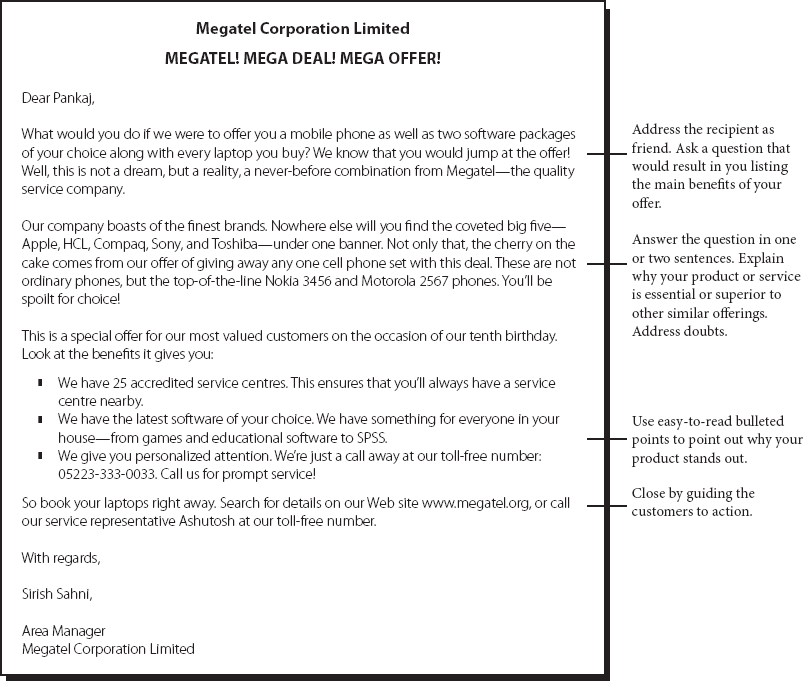
Other sales strategies employed are:
- Referrals, testimonials, and endorsements: These help build credibility.
- Point out loopholes in the competitors’ offerings.
- Free trials: These entice the client.
- Guarantees returns at ten times price: This refers to assured guarantees, extended warranties, services, and add-ons.
- Create a sense of urgency (“Act now to avail the best price!”) by asking customers to contact you by a specific deadline.
- Bundle a premium as a reward for acting before the expiry of the deadline.
- Unit price: Sell at the smallest unit (not INR 650 for a carton, but instead INR 6.50 for one unit).
- Colour schemes: These add attractiveness to the offer.
- Postscript: This re-states the benefit and urgency of the offer.
- Envelope: It is the envelope that acts like the real salesman. Make the envelope look professional and official in appearance. Companies sending sales letters use teasers (“Open the envelope for a never-before vacation offer!”) and labels (“Important. Urgent. Express.”) to denote the urgency of the offer. Include a return address to make the letter appear less like junk mail.
Exhibit 12.9 gives us an example of an online sales letter.
Exhibit 12.9 An Online Sales Letter
Benchmark E-mail is the leading e-mail marketing service for creating dynamic marketing campaigns, and we would like to tell you more about what makes our service different.
Unlike many other e-mail services, everything we offer is Web-based. This means there is no downloading or complicated setup for you. The good news is that you can give it a try for 30 days at absolutely no cost to you. You can check out our pricing by visiting our Web site: www.benchmarkemail.in/ExtPricing
Another thing that makes us different? Affordability! Our plans start at just INR 475 a month. This includes all our standard features as well as 24/7 access from anywhere in the world, as long as you have an Internet connection. Our standard features include:
- Complete contact management
- Custom list builders
- Professional e-mail templates
- Drag and drop e-mail builder
- Real-time reporting
- List exporting
- Campaign scheduling
- Customer polling
With so much packed in one single service, it is no wonder that our clients are so satisfied with us! Here's what a happy customer has to say:
“Benchmark E-mail is easy to use and helps enormously. Once I jumped in and started creating and sending campaigns, I just couldn't believe how easy it was to manage and send all my e-mails. Our sales have increased 20 per cent since we started using Benchmark!”
So don't wait any longer. Go ahead and sign up for your 30-day free trial now! Just click on the button to the right.
With regards,
Nishant Rao
Exhibit 12.10 An Example of a Typical Joining Letter
(Candidate's name and address)
(Date)
To,
(Employer's name)
(Designation)
(Company address)
Sub: Joining letter
Dear Sir,
I am delighted to inform you that I am joining <name of organization> from today as a trainee manager as has been mentioned in your appointment letter to me, dated 19 May, 2010, Reference number: <letter number>
I kindly request you to accept my joining letter.
With regards,
(Candidate's name)
Offer Letters
A job offer letter is a legally binding contract for employment purposes. It includes terms and conditions of the job; details about the compensation package; incentive schemes; job duties; reporting authority; and other service benefits applicable to the candidate. It is composed in block format and uses bullet points to convey important points. It usually has a section for acceptance or rejection of the offer as well.
Experts recommend including as many details as practical in the job offer letter or as attachments or enclosures, so that the candidate has enough information to make an informed decision.
Joining Letters
After the candidate indicates the acceptance of the offer letter, he or she is required to submit a joining report—usually a letter that indicates that the candidate has joined on a particular date and time. This is maintained for personnel records. Exhibit 12.10 demonstrates a typical joining letter.
Request Letters
A request letter, as the name suggests, is written to request information. The tone is polite and courteous. The opening is specific, indicating what is being requested and why. The letter ends with a polite acknowledgement of the grant of the request and the action required from the recipient. Exhibit 12.11 demonstrates this clearly.
Good News Letters
Good news letters are letters of congratulations and positive news, such as the granting of a request. A typical good news letter format consists of:
- Stating the good news at the beginning.
- Providing details about the good news: any conditions; procedures; clarifications; or limitations, if any.
- Closing with a call for action or an expectation.
Exhibits 12.12 and 12.13 give examples of two kinds of letters conveying good news.
Exhibit 12.11 Example of a Request Letter
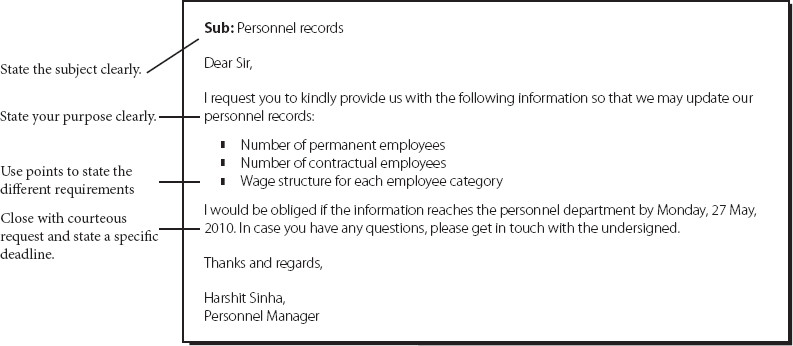
Exhibit 12.12 Example of a Good News Letter
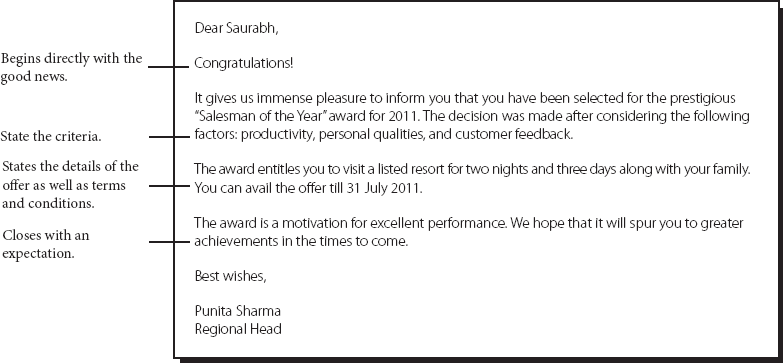
Exhibit 12.13 Example of a Good News Letter
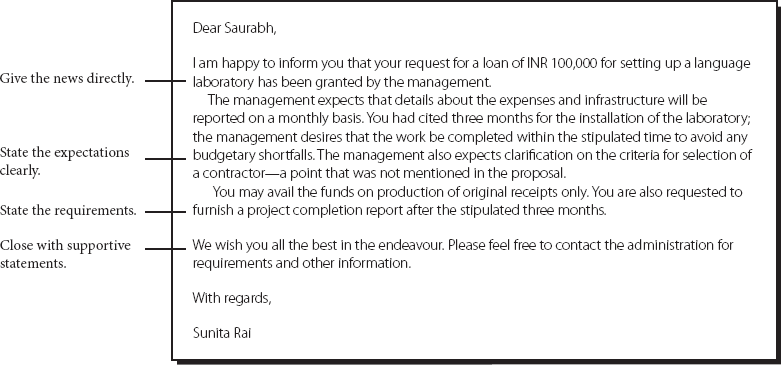
Bad News Letters
It is important to qualify the term “bad news” before discussing the format of such a letter. Bad news includes: rejection of a request, informing an employee(s) of impending layoffs, refusing an appointment, reporting a decline in sales and customers, stock out, loan cancellation, refusing a loan extension, closing of operations, or informing someone about a termination in extreme conditions.
Conveying bad news is a sensitive issue. Indeed one of the most difficult tasks in business is saying “no.” The problem is somewhat compounded in print, as we do not have the benefit of matching facial expressions and voice to convey the bad news. Generally two ways are recommended: direct and indirect.
Direct Approach
In the direct approach, the bad news is conveyed upfront, in the opening paragraph itself. On one hand, this conveys the news clearly and doesn't beat about the bush. If stated courteously, it might be appreciated by the recipient. On the other hand, it might alienate the reader and might come across as too harsh. It might also damage the relationship. Such a letter might start with the words, “You have not been granted…”.
Indirect Approach
An indirect approach suits the reader who does not know the writer well. However, if too much “spin” is involved, it might not sound genuine. Such a letter might start with “We have always taken pride in…however, we regret that we are unable to oblige your request…”
Writers following the indirect approach use buffers like the following to cushion the impact:
- Appreciate the reader's effort
- Compliment the reader
- Sympathize with the reader
- Apologize to the reader
- Agree with the reader
- Make a general service statement
- Give concrete, rational explanations for refusal
- Avoid negatives words; turn around the same statement to say things in a positive manner
- Provide a neutral closing
Effective communicators use the following semantics to make the refusal less painful to the reader:
- Avoiding personal pronouns: “You were lacking in essential qualifications, which is why we…”
- Avoiding phony statements; people can read through spin. Consider this notice issued by Axin Bank: “The Axin Bank deeply cares for its customers; however for the next five days we will be unable to provide essential services as the Bank is currently undergoing some upgrades.” If the bank genuinely cared about its customers, it would have provided alternatives for smooth transactions.
- Avoiding stating the bad news in the opening line itself, “We regret that we will not be able to offer you appointment in our company.” It sounds a bit high-handed and decidedly rude to make such a statement.
- Giving reason for the bad news; show that the decision is fair and reasonable.
- Avoiding beating about the bush.
Exhibit 12.14 gives us an example of a letter written to convey bad news.
Exhibit 12.14 A Bad News Letter

Exhibit 12.15 Warning Letter
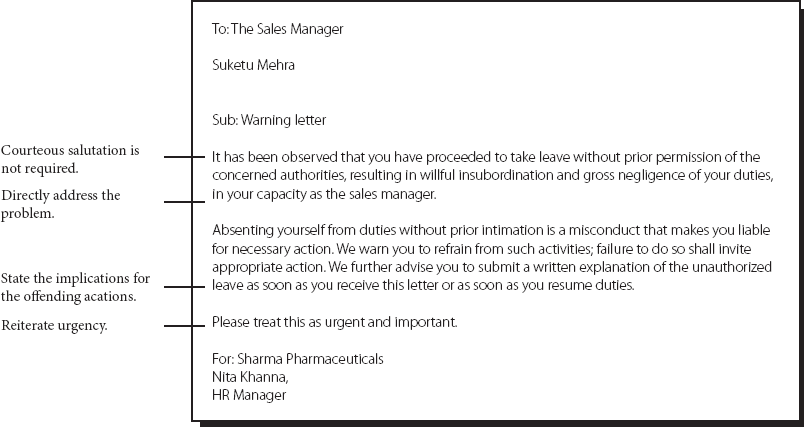
Warning Letters
On the basis of preliminary enquiries conducted against an errant employee or a dissatisfactory explanation received against a show cause letter/memo, a letter of warning is issued to the employee. A typical warning can be for tardiness, unexplained absence, willful insubordination, verbal misdemeanour, and so on. Exhibit 12.15 gives an example of a warning letter.
Welcome Letters
When any employee joins a company, it is customary for the HR Manager to welcome him or her to the organization as well as to inform other employees about the new employee. Exhibit 12.16 provides an example.
Exhibit 12.16 A Welcome Letter
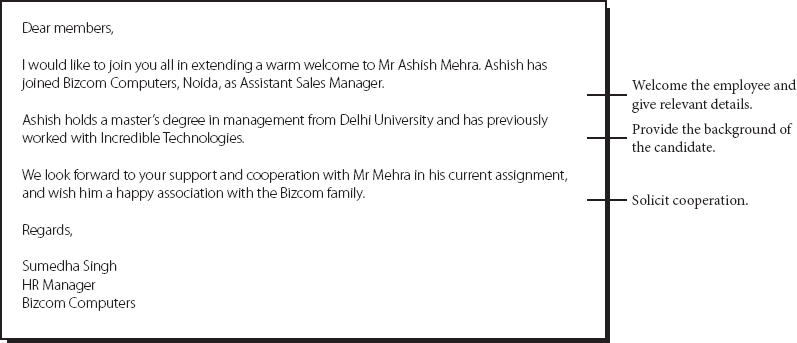
Exhibit 12.17 A Farewell Letter

Farewell Letters
Farewell letters are written for an employee who is leaving the organization. It is certainly difficult to compose a farewell letter for an employee who is leaving the organization under favourable circumstances. Exhibit 12.17 gives an example of a farewell letter.
Increment Letters
Increment letters announce the award of an increment to an employee. Such letters essentially fall under the “good news” category, but they follow a particular format. Exhibit 12.18 illustrates this further.
The revised salary can be mentioned in another way too. Consider Exhibit 12.19, which shows part of an increment letter.
Exhibit 12.18 An Increment Letter

Exhibit 12.19 Part of an Increment Letter
You will be paid as below:
| Employee Name | Employee Code |
| Date of Joining | Position |
Exhibit 12.19
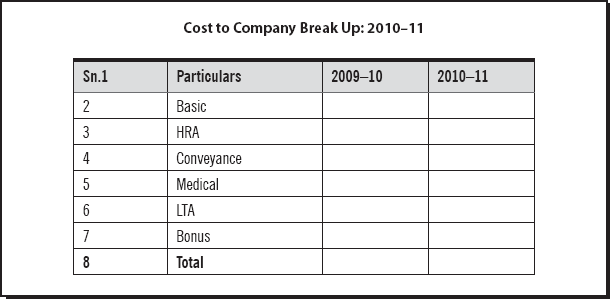
Exhibit 12.20 A Transfer Letter
Ref. No:
10 May, 2011
Sonam Mehra
56, Apsara Apartments
MG Road
New Delhi
Dear Ms Mehra,
This is to inform you that you have been transferred to our sales department and your joining date will be 15 May, 2011. Your last working day with the marketing department would be 14 May, 2011. Your earlier designation as per your appointment letter dated 15 February, 2010, was assistant marketing executive, and after the transfer, you will be a sales executive. Your employee ID, salary structure, and other perks would remain the same.
Your employment will be governed by the earlier employment agreement as well as the applicable rules, regulations, and policies of the company.
We believe you have a successful career ahead of you.
Thank you,
Sumedha Singh
HR Manager
Bizcom Computers
Accepted:
(Sonam Mehra)
Signature: ____________
Date:
Transfer Letters
An employee may have to be transferred to another location. A typical transfer letter has been shown in Exhibit 12.20.
MEMORANDUMS
The term memo (short for memorandum) is derived from the word “memorandus,” which means “to be remembered.”
A memorandum is a form of internal communication. It is brief and concise. Memos are used frequently in almost all organizations. Like letters, they serve as important written records and help members of an organization communicate without the need for time-consuming meetings. Memos are an efficient and effective way to convey information within an organization.
The Memo Format
A memo should be specific and concise. For example, instead of titling the memo “Rules,” it is better to write “Office rules for attendance.” This makes filing and retrieving the memo easier. Exhibit 12.21 demonstrates the structure of a typical memo.
Types of Memos
Memos follow a specific format, although they vary across organizations. The length of the memo also varies according to its purpose. The various kinds of memos have been described in Exhibit 12.22.
Exhibit 12.21 Structure of a Typical Memo
MEMORANDUM
To: (Name and designation)
From: (Name and designation)
Date: (Month, Day, Year)
Introduction: Gives the context briefly; states the problem; and indicates the broad purpose.
Main Body: Details requirements, requests, reports, policy changes, persuasive arguments, reminders, information, announcements, and feedback, usually in the form of a list.
Conclusion: Action points; follow up.
Attachments: If any
Copy to:
(Name of person to receive copy)
(Name of person to receive copy)
Exhibit 12.22 Various Kinds of Memos

Information-seeking Memos
A typically information seeking memo has already been demonstrated in Exhibit 12.11.
Notices in Memo Format
A typical notice in memo format has been provided in Exhibit 12.23.
At times, a notice for minor negligence is given in memo format. Exhibit 12.24 shows you how.
Show Cause Notices in Memo Format
A show cause notice in memo format specifies the misconduct under the scheduled section and gives the employee a specific amount of time to provide a written explanation as to why disciplinary action should not be taken against him or her. Exhibit 12.25 shows this further.
Exhibit 12.23 Notice in Memo Format
From: Ashish Sharma, Personnel
To: All Employees
Date: May 19, 2010
Sub: Lunch breaks
Recently, it has come to the management's attention that some employees are taking extra time for lunch. Absences from duty are reportedly taking place with employees away from the office even 2 to 3 hours after lunch time.
States the problem or the issue.
I request you to note that the designated time for lunch breaks is from 1.00 to 1.30 pm only. Please adhere to the allotted time, failing which management may be compelled to take necessary action. I remind you that provision exists for short leave (two per month), which may be availed for urgent personal work.
Details the requirements; reminds about the rules
Action point; offers alternatives so as to not sound unsympatheic (buffer)
Thanks and regards,
Ashish Sharma
Exhibit 12.24 Memo for Minor Negligence
Memo
(Employee name)
(Employee code)
It has been brought to the management's attention that you have (give here the nature of complaint, date/place the event occurred), which resulted in (here please state the consequences such as monetary loss) to the company.
You are advised to be more careful in the future.
Thanks,
HR Manager
Warnings in Memo Format
A warning might also be given in a memo format. Exhibit 12.26 shows you how.
Transfer Memos
When the services of the employee are transferred from one location to another, the human resources department sends a transfer memo or letter to the employee, which includes the necessary transfer-related information and terms and conditions. Exhibit 12.27 gives an example of a transfer memo.
Exhibit 12.25 Show Cause Notice in Memo Format
MEMO
To: (Name and designation)
From: (Name and designation)
Date:
Sub: Show-cause notice
It is charged that you have (here give the nature of the complaint, date/place occurred), which resulted in (here please state the consequences such as monetary loss) to the company.
Please explain why action should not be taken against you, in writing, within (here give the number of days or hours), failing which, it is construed that you have accepted the charge, and action will be taken accordingly.
Exhibit 12.26 Warning in Memo Format
To: (Name and designation)
From: (Name and designation)
Date:
Ref: Memo number … dated…
We have carefully considered your explanation, which has not been found satisfactory.
You are hereby seriously warned and any such occurrence in the future will be very seriously.
Written Warning
Date: ___________________
Employee: ___________________
Issued By: ___________________
A written warning has been issued to you on the above date. The reason for the warning is: ________________
E-MAIL COMMUNICATION
In this electronic world, e-mail is one of the most exciting communication innovations. It is an essential part of business communication and helps us communicate with both internal and external customers. E-mail has even reduced the face-to-face communication characteristic of so many companies’ style of internal communication.
E-mail communication has the following distinguishing characteristics:
- It facilitates instant contact.
- It transcends geographic boundaries.
Exhibit 12.27 A Transfer Memo
Office Memo
Bizcom Computers
181A, Tech Building
Sector 53, Noida
Telephone: 12345678
Fax: 23456789
E-mail: [email protected]

Your services are being transferred from the Ahmedabad project office to our head office at Noida. By 22 May, 2011, you are requested to report at the head office of Bizcom Computers at Noida, located at 181A, Tech Building, Sector 53.
For this transfer, you will be entitled to transfer allowance as per company rules.
Sumita Menon
Head of HR
Bizcom Computers
- It is impersonal in nature; it lends itself to anonymity.
- It is typically used in situations where an instant response is not required.
- It helps to form/create/define a “persona” of the sender (facilitated by the way one composes an e-mail).
- It is less expensive to send an e-mail than to hold a face-to-face meeting or circulate a notice in hard copy.
- It can be used to send a message to a large number of internal/external customers simultaneously.
- There is no expectation of privacy with work e-mail accounts.
- E-mails have a long shelf-life.
Format
The format of a typical e-mail is shown in Exhibit 12.28.
Tips for Effective E-mail Communication
E-mail communication lends itself to errors. This is because people often mistakenly take it to be an informal medium and use expressions that are not in line with the rules of business grammar. When dealing with expatriates or with Indian colleagues, ensure that the language used in your e-mails is professional, crisp, and businesslike.
Treat Subject Lines as Headlines
A headline in a newspaper grabs the reader's attention as well as provides information. It immediately tells you what the main story is all about. In a similar manner, the subject line of an e-mail should indicate the theme of the message. At times, the message is the subject line itself and, therefore, it is important to draft the subject line correctly. An appropriate subject line ensures that the e-mail is read and not deleted. The general rule is always to have a subject line. A few examples of good subject lines are:
Exhibit 12.28 Format of a Typical E-mail
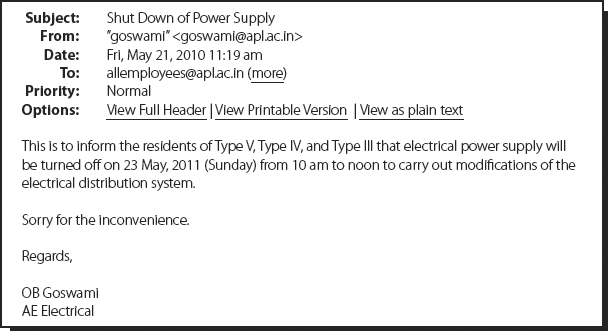
- FYI only: Meeting minutes
- ARs included: Minutes from MRC, all ARs due Friday12/4
- Gitam, Peter: Need you at noon meeting Wednesday with your updates
- Returning by IC811; 4.30 Arrival (EOM)
- Agenda: Staff meeting Thurs 3/12, 10:00 pm (RNN)
- Mary: I will attend the conference FtF and present summary (EOM)
- Library books overdue
Some examples of poor subject lines are:
- MOM
- Periodicals
- Re: (blank subject line)
- Like it?
- Unrelated subject line: sending an e-mail with an old subject line that does not relate to this message
Communication Bytes 12.1
The following are a few subject line tags for e-mails:
URG: Stop everything, read me first
HOT: Needs immediate attention
RSP: Need you to respond either way
MTG: New/modified meetings
FWD: Forward to your respective group(s)
HLP: Need information, assistance with a problem
FYI: For your information
ACT: Needs action
Put One Theme at a Time
An e-mail is a cheaper alternative to snail mail. Hence a number of e-mails can be sent if there are many issues to address. For instance if a meeting agenda is to be communicated to employees along with news of an impending farewell party for a colleague, it is wise to send two e-mails instead of putting the agenda and the party in one e-mail. This way the messages can be remembered and responded to easily.
Use the Direct Approach
The first paragraph of the message should state the purpose of the e-mail and what the reader is expected to do. One can do without preliminaries and use of buffers in e-mails. Also make sure to include identification and contact details.
Exhibit 12.29 gives us a few examples of effective opening and closing lines of e-mails.
Clean the Inbox Daily
It is a good idea to streamline the e-mail inbox and other folders by deleting unnecessary e-mails. If one has to respond to a lengthy e-mail that can be deferred, then it is polite to inform the sender that the message has been read and the reply would be sent in a day or two. However, internal e-mails should be dealt with quickly as these involve projects, deadlines, meeting notes, and so on.
Be Formal
E-mails are official communication. They are a written form of communication that can be printed and viewed by others. Use of slang and abbreviations is poor e-mail etiquette.
Exhibit 12.30 provides an example of a poorly written e-mail.
Exhibit 12.29 Good Opening and Closing Lines in E-mails
| Good opening statements | Good closing statements | Words that could be replaced |
|---|---|---|
|
This is to inform you This is to seek your permission This is to update you This is to bring to your notice Please give approval for Further to our discussion I would like to With reference to |
Please get in touch for any further clarifications Please get in touch for further discussions I would be glad to be of assistance I would appreciate your prompt response Thanking you in anticipation Looking forward to your prompt response Looking forward to your cooperation Your support is appreciated Should you have any questions |
Reply – Response/Respond Thank – Appreciate Sorry – Apologize Please – Request you to Problems – Issues/ Challenges Can – Could (Can is considered to be rude; could is more polite) Should – May But – However Regarding – with respect to Prepone: Advance/Move up |
Exhibit 12.30 A Poorly Written E-mail

There are a lot of things wrong with the e-mail shown in Exhibit 12.31. Some of them are:
- Font: The font of the e-mail is questionable. Always use a well-known font like Times New Roman in a professional setting. Typing in all caps also gives the impression that you are shouting. It is always advisable to stick to sentence case in e-mails.
- Short forms: Numerous short forms have been used in the e-mail (for instance, “FYI” in place of “for your information”). Such abbreviations are unacceptable in professional situations. It is always good to treat e-mails as just another form of business correspondence. Remember that you are writing to a professional and not a casual acquaintance. Do not use terms that are too colloquial.
- Punctuation: The e-mail doesn't have proper punctuation. Many people think that e-mails do not need proper punctuation marks. They couldn't be more wrong. However, too many punctuation marks are a hazard as well.
- Grammar: Use grammatically correct, complete sentences. Do not use cryptic phrases. You might use bullet points as people find them easier to read.
Exhibit 12.31 gives us an example of a typical welcome e-mail that might be sent out to a new employee by the company representative.
FAQ on E-mail Etiquette
- How do I address a person? Stick to formal terms—use “Dear Sir” or “Dear Madam”.
- How do I address someone if I am unsure of their gender? Address the person by their full name (for instance, “Dear Annapuran Roy”).
Exhibit 12.31 Welcome E-mail
To: New Employee
Cc: Mentor and Immediate Supervisor
Dear Irfan,
It's great to have you connected to Bizcom Computers on e-mail! Your company colleagues are just a click away on the global address book.
I wanted to inform you that your Employee Code is _______. We have also attached the communication deck on the PDR process and attached the form. You are requested to discuss your KPIs with the supervisor and mail the same to _____________________.
All our policies are available on the common server, in a folder titled “Company Policies.” Please make sure that you look through them.
Your unique user ID and password to access the company server will be given to you in a few days.
We wish you a successful career at Bizcom!!
Cheers,
Chanda Singh
Staffing Representative
Information Bytes 12.1
Indian companies like Bharti have switched to using SMS instead of e-mail. Most of the internal communications in the company happen through an SMS intranet developed by IBM. Companies like Oracle and SAP already offer social networking applications inside their enterprise resource planning (ERP) systems.
- Should I request delivery recipients? Yes, you may request delivery receipts when writing to subordinates, but not when writing to seniors. Request an acknowledgement instead.
- Should I use attachments? Limit attachments as they clog up people's inboxes.
- Should I reply afresh to every e-mail? No; it is better to preserve the thread as far as possible.
- How quickly should I respond? Respond immediately if possible; if you're unable to do so, send a quick reply acknowledging receipt of the message and follow up as soon as possible.
- What if my message is in the subject line itself? Add the acronym “EOM” (end of message) at the end of the subject line.
- How do I indicate that a reply is not necessary? Add “RNN” (reply not necessary) at the end of the message.
- How should I respond if I am angry? It is best to avoid replying to an e-mail when one is angry. E-mail is not usually the best forum to voice disagreements or vent.
THE OFFICE CIRCULAR, OFFICE ORDER, AND NOTICE
Office circulars, orders, and notices are useful methods of communicating within an office.
Office Circular
An example of downward communication, a circular, as the word suggests, is circulated to apprise employees about additional workload, rotations, displacements, transfers, and other such information. It conveys what the management wants employees to do in a particular time period.
Circulars are quite common in government departments, but they are also an effective go-between for the management and the operating or the field staff. Circulars are typically characterized by language that is slightly obfuscated (for instance, “Further to our previous circular no. X/-21, section XV, sub-section VVI (a) has been modified as the following, until further notice…). Exhibit 12.32 gives us an example of a typical office circular.
Office Order
Office orders are generally issued by an authority. They contains instructions related to office work, change of working hours, instructions regarding holidays, messages by senior authorities when they take over an organization, promotions, and so on. Office orders are issued either periodically or as required. They have an element of “order” attached to them, something that has to be unquestionably followed and implemented. Exhibit 12.33 shows this further.
Exhibit 12.32 Office Circular
To: GM and department managers |
From: HR Department, Head Office |
IPK Polymers Ltd., Indore |
|
Cc: Executive Council (Directors) |
Date 26 May, 2010 |
SUB: New employee joining effective June 1 |
Ref: HRO/Circ/9 |
We wish to introduce Mr Kirti Sarwarkar who has joined IPK Polymers Ltd. as Assistant Sales Manager. He will be based in our main office at Indore with effect from 1 June, 2010.
Thank you for your cooperation!
Rajendra Sahni |
K.P.K Sinha |
HR Officer IA |
HR Manager |
Cc: Indore Sales Office/IPK Warehouse |
Exhibit 12.33 An Office Order
From: KPS Srivastava, President |
To: All employees in Plant II |
DIR/2010/27
It is hereby informed that in lieu of the extended production schedule, henceforth all Saturdays from July 2010 will be considered working days with regular weekday timings.
This order is issued with the permission of the competent authority.
KPS Srivastava
Chief Administration Officer
Notice
portance is also issued in the newspapeA notice is a sign posted in a public space. It deals with announcements and other general information. A communiqué issued by a government official is also called a notice. A communication of national importance is also issued in the newspapers as a public notice. Exhibit 12.34 provides us with an example.

Notice is a sign posted on a public space. It generally deals with announcements and other general information.
Exhibit 12.34 Example of a Notice
From: Secretary, Employee Council |
To: All employees |
Ref: ECM/04/2010
Date: May 21, 2010
A meeting of the Council has been scheduled to be held on Monday, i.e., May 24, 2010, at 3 pm in FB-1. All are requested to make it convenient to attend the meeting.
The agenda for meeting is:
Confirmation of the minutes of the last council meeting held on March 9, 2010.
Discussion on the new pension yojana.
Any other matter with the permission of the chair, M.K. Sharma.
SUMMARY
- Business writing is different from other forms of writing. This is because the business audience is usually pressed for time and is most likely to skim a letter, e-mail, or memo than read it thoroughly. Business readers want the bottom-line first: they want to hear about things that affect them professionally. This is why business writing is crisp and succinct rather than evocative. It reflects the unique purpose and considerations involved when writing in a business context.
- A business letter should have the date, the inside address, a complimentary close, and a subject line. It should address people with their proper title and one should sign one's name before closing. It should also mention the presence of enclosures and should be copied to the relevant people.
- Various kinds of letters include cover letters, letters of enquiry, sales letters, offer letters, joining letters, request letters, good news letters, bad news letters, warning letters, welcome letters, farewell letters, increment letters, transfer letters, etc.
- Memos are a brief and concise form of internal communication. There are various kinds of memos including information-seeking memos, notices in memo format, show cause notices in memo format, warnings in memo format, and transfer memos.
- In the electronic world, e-mail is one of the most exciting communication innovations and it helps us in both internal and external communication instantly.
- The office circular, office order and notice are other methods of communicating within an office.
ASSESS YOUR KNOWLEDGE
- Enumerate the differences between letters and memorandums.
- What style of communication would you adopt when writing to an employee whose performance is below par? Why?
- What is the relevance of subject lines in letters, memos, or e-mails? Explain with examples.
- For what kinds of correspondence can a memo be sent via e-mail?
- What are the important rules for composing a sales letter? How is it different from a routine correspondence?
- What qualifies as “bad news” and “good news” in business communication? What techniques are adopted to convey ‘bad news to employees and clients?
USE YOUR KNOWLEDGE
- One of the employees in your organization has been absent for the past three weeks without any explanation. You have been trying to contact him, but have not been able to get in touch with him. You feel you have pursued the errant employee enough. You now want to give him a warning letter, followed by a termination letter for legal purposes. Draft a warning and a termination letter to the employee.
- Write a letter to an employee requesting her to postpone her vacation due to an urgent deadline for an important project.
- Submit a resignation letter to your chief manager. You are leaving under not-so-happy circumstances. In spite of your best efforts, you felt that the management was biased against you.
- Draft an internal memo to your staff for disciplinary purposes; ask them to report to work on time, inform the office of any absenteeism, and include a doctor's letter for sick leave. The most important problem that you would like to address is that the staff takes advantage of the director's absences to frequently take a few hours, or even a full day, off. You would like everybody in the office to observe professional discipline.
- Draft an internal memo to your employees on the use of mobile phones inside the premises of the organization. Of late, you have been receiving complaints of disruptions caused by mobile phones during meetings, presentations, conferences, and even the office seating chambers.
- As a manager, you have to send an e-mail to all the customers of the company where you are currently working to invite them to the inauguration of the new office. Your task is to compose the e-mail.
- Archit's salary has been pending for the last four months. Being the primary supporter of his family, he is concerned, as there many responsibilities to take care of. He has been unable to pay his rent for the last two months, and has not sent money home for the last three months. Write an e-mail to his supervisor, Mr Sahai, regarding this.
- Professor Naved came across this request in one of his interactive lectures:
Professor, we are an organization consisting of relatively young employees. We came across one case where four or five employees were interacting with each other on official e-mail. It started with a nice message and slowly descended into abusive and disrespectful language. They all were joking around on official e-mail. We are not aware if any of them was personally hurt or offended, as we did not get any complaints. I approached one of them and explained the basics of e-mail etiquette and gently chided him. Now I want the entire organization to take precautions when corresponding with each other on e-mail. How should we compose an e-mail to employees advising them about e-mail usage and acceptable e-mail norms in our organization?
Compose an e-mail to help Prof Naved with this request.
- The management of a company has to write to its regional heads, berating them for not providing satisfactory services to clients and advising them to take ownership of their regions. Assume you are the management and write this e-mail.
- You have joined a new company. On your first day, you received an e-mail from the CEO welcoming you on board. You want to reply to his e-mail. How would you do so?
- You are the HR head for your company. Write an e-mail asking employees for their feedback on the induction/training session they attended recently.
- Draft an e-mail to all employees regarding an annual picnic. Enlist their cooperation and seek contributions to organize games, events, and food.
- You have to send a message to all employees regarding performance appraisals, as they are being introduced for the first time in your organization. People may not understand the process. Send an e-mail with complete information explaining performance appraisals in simple, easy-to-understand language. Mention the following:
- Appraisals would be on quarterly basis.
- Annual increments would be based on these quarterly appraisals.
- Appraisals would be highly confidential.
- List the reasons for appraisals.
- Explain the benefits of appraisals.
- Read the following complaint filed by an irate customer about the quality of biscuits purchased from a particular company, and the response sent by the company.
Complaint by customer:
I bought two packets of Delicious Biscuits recently; unfortunately, the biscuits are all in pieces or crumble quite easily when handled. This has been occurring for about the past four months. The retailer is quite prominent (Appu Stores in Ahmedabad), and I doubt that they are at fault. I am quite disappointed in the decline in quality of Delicious Biscuits.
–A loyal customer
Reply to the complaint:
Dear Dr. Maheshwari,
Thank you very much for your valuable feedback. Customers like you are an integral part of our business and your satisfaction is very important to us.
We are very sorry for the inconvenience caused to you in this instance. We shall contact you shortly to understand the nature of your complaint first-hand and take remedial action.
We shall also be glad to have your suggestions on what kind of products you would like Delicious Biscuits to make in the future.
Best regards,
Customer Service division
Delicious Biscuits
WEB-BASED EXERCISES
- Refer to <https://owl.english.purdue.edu/owl/resource/654/01/>. What are the benefits of “accentuating the positives” in writing business letters? In what circumstances do you not accentuate the positive in letters?
- Refer to <http://www.hcltech.com/enterprise-application-services/> Assume you represent this firm. Now draft a sales letter on behalf of the firm, offering package and platform-led services to transform a customer's business and IT operations. You can select any customer and refer to their Web site.
- Refer to <http://www.cosmostours.com.au/>, a subsidiary of Globus Tours. As you are considered quite an expert in planning and organization, you have been entrusted with the task of arranging a group vacation tour for your company officials (about 15 managers and their families). Your company is a Fortune 500 firm, doing wonderfully well. Compose an e-mail requesting Globus Tours to provide the details of the tour. You are interested in knowing the expense for travelling, boarding, and lodging. You are also interested to know the sightseeing possibilities.
- Read the following extracts from the Internet and then comment on Google's communication style:
- The Google culture is incredibly open. Even as an intern, I was able to read through documentation and source code for these important Google technologies. Whenever I had more detailed questions, there were plenty of Googlers hat I could go to in person or by e-mail who were very eager to provide help.
After a while I looked to start sharing all of the documentation and tutorials that I had written while learning about Google technologies.(Written by Sam Slee in the Google Analysis Products department. Available at <http://googleforstudents.blogspot.com/2008/12/googlers-beta.html>/.)
- If you work at Google and have an @google.com e-mail address, you simply enter your name and e-mail address, and then enter the e-mail addresses of up to five other Google employees whom you have a crush on. If one of those people also enters you as one of their crushes, you'll be connected.
Read more: <http://techcrunch.com/2010/02/12/googlecrush-parisian-love/#ixzz0p1XeVqZn>
- The Google culture is incredibly open. Even as an intern, I was able to read through documentation and source code for these important Google technologies. Whenever I had more detailed questions, there were plenty of Googlers hat I could go to in person or by e-mail who were very eager to provide help.
